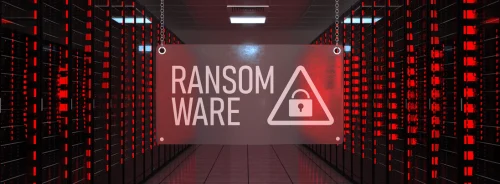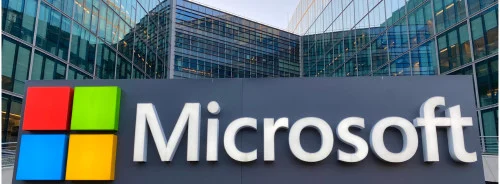HealthManagement, Volume 4 / Issue 4 / 2009
Author
Rob Phillips,
Director of Consulting,
Service-Now.com,
USA
Software-as-a-service (SaaS) is disrupting the status quo in the software industry while delivering real benefits to support the unique requirements of healthcare IT. Software applications using the Internet as the exclusive development and delivery platform are proving to be easier to consume and administer, while providing notable reductions in technology ownership costs.
According to Sarah Friar of Goldman Sachs, “Software-as-a- Service is the most impactful trend in software currently. SaaS solutions solve many of the problems that traditional software faces, including large upfront license fees, long time to implementation, and access issues by a mobile workforce, outside of the company network. Over the next several years it will become pervasive in almost all areas of the software market.” (Friar, 2007)
Help for the Service Desk
Core to every large healthcare IT organisation is IT service management technology to help automate and manage a myriad of IT services and processes. At a growing number of businesses, service desks need help themselves.
For years, companies needing to resolve IT incidents and problems have relied on traditional service desk systems. No doubt, HP and BMC own the majority of the enterprise IT service desk application market with their Service Manager and Remedy products respectively.
However, with the advent of modern Web technologies and delivery mechanisms, many healthcare organisations are realising significant business benefits from technological innovation in the enterprise IT management market. Initiatives such as shared services, service-oriented architecture and cloud computing promise to help by consolidating, integrating and reducing overall complexity of enterprise IT and business infrastructures.
For the IT service professional, the ability to continually improve IT Infrastructure Library (ITIL) processes and the IT service management application in tandem, without a huge capital investment, is a common desire but not always possible considering tool limitations. Modern ITSM applications use the latest technologies to be agile, not fragile, while focusing on the needs of IT users and their processes.
Today, IT management application alternatives are emulating modern Web technologies used by B2C vendors like
Amazon.com, Yahoo!, Google and Apple while providing access to the same benefits delivered by established SaaS vendors like Salesforce.com and NetSuite.
One such ITSM application alternative from Service-now.com, offers extensive functionality, flexibility and aggressive costeffectiveness that adapts to users' specific needs and grows with their processes. These modern solutions are built on the Internet and delivered via SaaS to eliminate the high implementation and management costs and complexities associated with traditional client / server software.
Despite existing perceptions, IT service management tools can be easy to implement, adapt and afford. Why aren’t the application vendors managing and maintaining their own products? Application vendors should be actively engaged in helping IT organisations focus on core competencies of developing efficient processes, providing great IT service, transforming the business, and creating excellent patient care.
NHS London Programme for IT
Lee Rucker, the head of service management for the NHS London Programme for IT, has caught the vision of on demand IT service management technology and predicts several benefits of the model as applied to a healthcare environment.
First, implementation costs for small or large NHS organisations are kept to a minimum considering the fact that no hardware or network infrastructure needs to be configured or application installed. This “no footprint” policy aligns with an NHS strategy to focus healthcare resources directly on patient care rather than the management of IT resources. A modern SaaS application is ready on demand when the people, process and culture are ready to consume it.
Second, what UI is more pervasive than the browser? An ondemand IT self service tool allows a healthcare IT organisation to more quickly and easily reach the broadest set of end users and IT workers, where they want and on the device they prefer. Rucker will be able to reach multiple NHS organisations with differing requirements through a common self-service portal.
On a related note, the versatility of an on-demand application allows for streamlined change management process coordination. The NHS can use the application to gather change requirements and approvals for various NHS Trusts (such as Acute Hospitals, Mental Health Hospitals and Primary Care) across London. IT change will be more quickly, consistently and efficiently affected throughout the healthcare organisation.
Finally, seamless ticketing with the NHS Trust’s main healthcare system supplier will help reduce the cost of coordination during the life of the relationship.
A Brief History of SaaS
IDC recently projected that the 2009 market for software-asa- service (SaaS), would grow 40 percent compared to the 2008 market. (Mahowald, 2009)
These findings combined with research published by ThinkStrategies and Cutter Consortium found that year-overyear
SaaS adoption doubled. The reasons cited by most survey respondents were elimination of additional infrastructure costs, deployment acceleration, and the pay-as-you-go subscription pricing model.
The market trend spotters agree, SaaS is the next big step in the logical evolution of software. Just as healthcare providers constantly innovate, IT has moved beyond the sneakernet, fat fingers, software patches, license keys and installation CDs.
But not every alternative to traditional software includes all of the benefits of true SaaS. It is important to understand the differences between traditional software, traditional software hosted by application service providers (ASPs), and modern SaaS.
The Status Quo: Traditional Software
In functional areas like customer relationship management, accounting and IT service management the new economy has marginalized the value of legacy software applications.
Traditional software involves significant up-front acquisition costs and requires recurring maintenance, support and upgrade costs that are multiples of the initial acquisition costs.
Organisations soon find that while traditional software can be customised, doing so often leads to version-lock as changes can’t be preserved through an upgrade. Even the most-simple upgrades become costly, resource-intensive reimplementation projects. To alleviate upgrade woes, traditional software vendors often recommend organisations refrain from customizing the application and adhere to the vendor’s out-of-the-box configurations. But shrink-wrapped software can’t realistically support the specific needs of today’s unique healthcare organisations.
Tosh Sheshabalaya in his article, “Customising Healthcare IT,” in the June – August 2009 issue of Healthcare IT Management succinctly summarises the issues around IT application customisation.
These hurdles are burdensome to the customer and often are no longer tolerated in this new economy. Realising as much, many traditional software vendors are beginning to pay lip service to the SaaS model. But current traditional software development, support and delivery channels, in addition to legacy revenue streams and company investor expectations, severely limit the ability of these vendors to offer customers a truly viable alternative.
Application Service Providers (ASPs): From Hope to
Meltdown
At the turn of the century, ASPs tried to provide an alternative to on-premise software. ASPs became brokers of legacy software that businesses didn’t want to own or manage on premise. ASPs were responsible for buying and maintaining the legacy application while making it available to customers from data centres owned and operated by the ASPs. In theory, customers were to receive a one-size-fits-all application without the burden of owning and managing it on premise.
However, the ASP model was doomed to failure from the start. As ASPs began to proliferate, the cost and challenge of delivering client / server applications efficiently and successfully became more difficult, time-consuming and expensive than even their on-premise predecessors. The significant cost of maintaining legacy applications did not magically go away and the end users were left holding the bag.
ASPs were challenged by extensive and expensive maintenance, support and upgrade requirements. These issues usually resulted in a poor user experience for the business and rapidly escalating costs for the ASP. Because of the inherent limitations of traditional software, the ASPs eventually failed.
The Future: Modern SaaS
The advent of SaaS offered significant improvements over ASP-hosted software, thanks in part to newly available Web technologies developed and used by a handful of innovativesoftware vendors.These SaaS vendors built their newWeb applications from scratch on the Internet and for theInternet. These new technologies also kept the cost of infrastructureand associated maintenance low so vendorscould create viable business models while passing savingsto the customer.
In this new world of agile application development, new product releases are scheduled throughout the year and upgrades are completely automated and transparent for the customer.
Modern SaaS technologies also allow the application to be customised on the fly by the customer while those customisations are preserved through upgrades and new releases. Since the more-efficient application is hosted by application vendor experts, the healthcare customer can expect predetermined levels of application performance, availability, data security and compliance.
Basically, the ASP meltdown occurred because hosted legacy applications were a fish out of water. Old software was not built to be delivered via the Internet and still had all of the same maintenance costs associated with a traditional deployment. The work to upgrade and customise didn’t go away, it was just outsourced. The ASP model broke under the weight of dated technology.
In stark contrast, modern SaaS applications are built on Webbased technologies and services that are highly configurable and always current. These key differentiators provide SaaS and its users a flexible, economical and dynamic environment in which software can be delivered where and when it is needed, and readily configured to meet specific business requirements. Modern SaaS solutions can be demonstrated, delivered and deployed rapidly, via simple and predictable subscription-based licenses.
When SaaS Makes Sense
SaaS solutions are broadly applicable across multiple business functions in many types and sizes of companies. Healthcare providers now more than ever need the IT organisation for IT service strategy and process execution. Why not leave the dirty work to the vendors? Let somebody else deal with the onerous task of keeping the infrastructure and application lights on.
While many traditional IT management software vendors have jumped on the SaaS bandwagon, few are offering modern SaaS. Some are merely providing the same client / server technology via an ASP delivery model and calling it SaaS.
A few well-placed, probing questions for vendors quickly separate the SaaS contenders from the pretenders:
Can you provide a customer reference for your SaaS offering?
Can you immediately provide a proof-of-concept or trial application instance?
What is the upgrade process like for your SaaS offering?
How often is your SaaS offering updated and upgraded? Is it tied to the same development cycles as your legacy offering?
Does your SaaS offering provide all of the same functionality of your client / server offering?
Is your SaaS offering a stop-gap or stepping stone for customers you eventually hope to have move to your traditional on-premise application?
Can your SaaS offering be administered and consumed by the IT organisation and end users in any browser connected to the Internet.
What underlying technology is the SaaS application built on?
What is included with your SaaS subscription license?
What does it take to customise your SaaS offering?
In the end, the ASP model and SaaS impostors do not have the best interests of the customer in mind. End users tend to know it when they see it.
Benefits of SaaS to Healthcare IT
Organisations
The healthcare industry shares a number of unique business problems that can be addressed by on-demand IT service management. Specific benefits include:
Instantaneous support for non-technical, highly intelligent mobile healthcare professionals;
More automation for line of business and IT workloads;
Users on shared workstations can access applications and data anytime, anywhere;
More effective and efficient change control collaboration and audit measures;
Compliance with regulatory requirements for data handling and storage, and
Improved IT service response times and first-call resolution rates provide medical professionals more time for patient care.
IT management applications should help healthcare providers focus on and achieve service delivery goals while not creating extra work for the IT organisation. On-demand application vendors do just that in assuming responsibility for the application. However, myths and questions remain in the minds of many IT organisations considering a switch to SaaS.
Is it Scalable?
SaaS isn’t just for small businesses anymore. SaaS scalability today has been proven to support some of the largest and most complex healthcare environments in the world, including many global organisations with thousands of IT users and hundreds of thousands of tickets and configuration items in the system. Subscription licensing and application modularity allow large organisations to adopt on-demand applicationsmodules in phases.
Can it Really be Customisable?
Many modern SaaS applications were built to be customised. Customisations such as form design, field behaviour, database extensions, and workflow designs are all accomplished with a mouse right-click within the Web browser interface. Healthcare organisations can customise their unique application instance to meet business process needs with the assurance that customisations will never disappear.
Can I Make Upgrades the Vendor’s Problem?
The SaaS upgrade process is an extreme departure from traditional applications. Using agile methods, a SaaS vendor’s development work is iterative and continually builds on the most recent version. Most SaaS applications are kept new and relevant with major functionality released several times per year and automatically applied to the customer’s instance.
Auto-upgrades are non-disruptive and all SaaS customers are kept on the latest version with the latest functionality. Again, all customisations are kept completely intact.
How Important is Application Security?
When providing an on-demand service, the business hinges on customer confidence. SaaS vendors are inherent security experts and must be able to deliver compliance with the myriad of data privacy regulations facing healthcare organisations today.
Legitimate SaaS vendors have world-class infrastructure technology with built-in security to ensure customer data is protected. SaaS vendors should be able to provide proof that applications are hosted in certified SAS-70 Type II data centres. These on-demand applications are also secured with a depth and breadth of the latest security features available including comprehensive defence and response systems, redundancy, regular backups and data replication, and application access control and auditing.
Can I Integrate?
Modern SaaS applications were built using the latest Web services and open APIs with the realisation that every healthcare organisation will have unique application integration requirements. An application built with integration in mind, not as an afterthought, facilitates integrations in days or weeks, not months or never. For example, Service-now.com provides approximately 50 integrations free of charge to most notable 3rd party applications and data sources including Microsoft SMS, HP OpenView, Tivoli TEC and Oracle Financials.
How Quickly Can it be Implemented?
SaaS implementations don’t get hung up on application installations. They are as ready as the customer’s people and processes. Core system setup and configuration begins on day one, not after weeks of struggling with an implementation.
Are Costs Predictable and Will I Save Money?
SaaS licensing, implementation and consulting services fees are predictable unlike costs associated with legacy applications. A simple subscription license is a set annual price for the length of the contract. And simplified subscription licensing, combined with zero maintenance or operating costs, means that users not only enjoy ROI, but return before investment. Many IT organisations report that an annual SaaS subscription license is about the same or less than the maintenance fees of traditional software vendors.
Can SaaS Help Reduce Soft Costs?
Healthcare IT organisations continue to spend close to a third of their total IT budgets on ongoing software-related costs for maintenance, operations and development. These soft costs are significantly reduced with SaaS through the elimination of upgrades, patch deployments, integrations, disaster recovery and application monitoring.
On-Demand IT Service Management is Here Today
Common IT service issues can be more effectively addressed and operational excellence achieved through modern SaaS that helps to automate ITIL best practices. Now organisations can focus resources on improving IT processes and driving new healthcare initiatives while the vendor experts maintain and administer their application.
Service-now.com, for example, is an application that was born on the Internet and lives on the Internet. Its founder and CEO, Fred Luddy, spent decades in the legacy enterprise software market and intimately knows the difficulty old technologies cause for end users. He started Service-now.com from scratch to build a better IT service management application based on modern Web technologies and delivered via SaaS. Since the first Service-now.com customer in July 2005, there are now hundreds of global enterprise IT organisations and dozens of large healthcare providers reaping the benefits of SaaS in IT. On-demand IT service management is here today.





